“He left in the Borgo bonissime facultà et alcune case che egli stesso si aveva edificate, le quali per le parti furono arseite e rovinate l’anno 1536.” So wrote Giorgio Vasari in the Life of Piero della Francesca, pointing out how, although the Biturgense artist’s career had led him far and wide throughout Central Italy to attend to commissions of great prestige, he had never severed the umbilical cord that bound him to his hometown, Borgo San Sepolcro, today Sansepolcro. This aptitude, moreover, is testified to us not only by the fair number of works he produced for the town of Sansepolcro, but also by the roles in public life he held in the small Valtiberina municipality. As luck would have it, despite the centuries that stand between his life and our contemporary times, even today the family building, which he elected as his main residence, has been preserved by maintaining for more than thirty years now a public function related to the enhancement of studies concerning one of the most important protagonists of Renaissance painting in Italy.
The house of Piero della Francesca or dei Franceschi stands just a few meters from the Cathedral of Sansepolcro, in an urban context of great charm, which seems not to have suffered the passage of time, and so also the residence of the painter seems to be unchanged. The imposing and sober building that occupies almost an entire block appears from period documents to have been owned by the Franceschi family since at least 1350.
The artist’s family lived here: his father Benedetto, a wealthy textile merchant, whose fortunes had begun, however, with the tanning of leather in a workshop in Cantone dei Graziani, and Pierino da Monterchi’s mother Romana, his brothers Marco and Antonio, who would later carry on the family business, who continued to reside in the building even when married, with their respective families. And in good probability Piero was also born here in an imprecise year to be placed between 1406 and 1416.
The same artist is said to have overseen the reorganization of the building during an expansion that took place around 1465 following a bequest in his will from a relative priest, Luca Manaria. This is still discernible in the architectural layout, such as in the rhythmic scansion of the windows, which seems to respond to that one panel devoted to architecture found in De prospectiva pingendi, the famous treatise on perspective left to us by the artist. However, the completed project was not seen by Piero, who in fact died before its completion. The fire mentioned by Vasari, possibly of arson origin, struck the building when it was still owned by the Franceschi family. Subsequently, the house had various changes of ownership: from Luigi Graziani, who had received it as a dowry by marrying a Franceschi, and who was the author of the restoration after the fire damage, to the Gherardi, and finally to the Collacchioni, the family also infamous for having impoverished the building of the fresco by Piero’s hand that was still preserved. Fortunately, thanks to the interest of the unforgettable art historian Mario Salmi, the house was purchased by the State Property Office, entering into a contract to turn it into a study center dedicated to the painter.
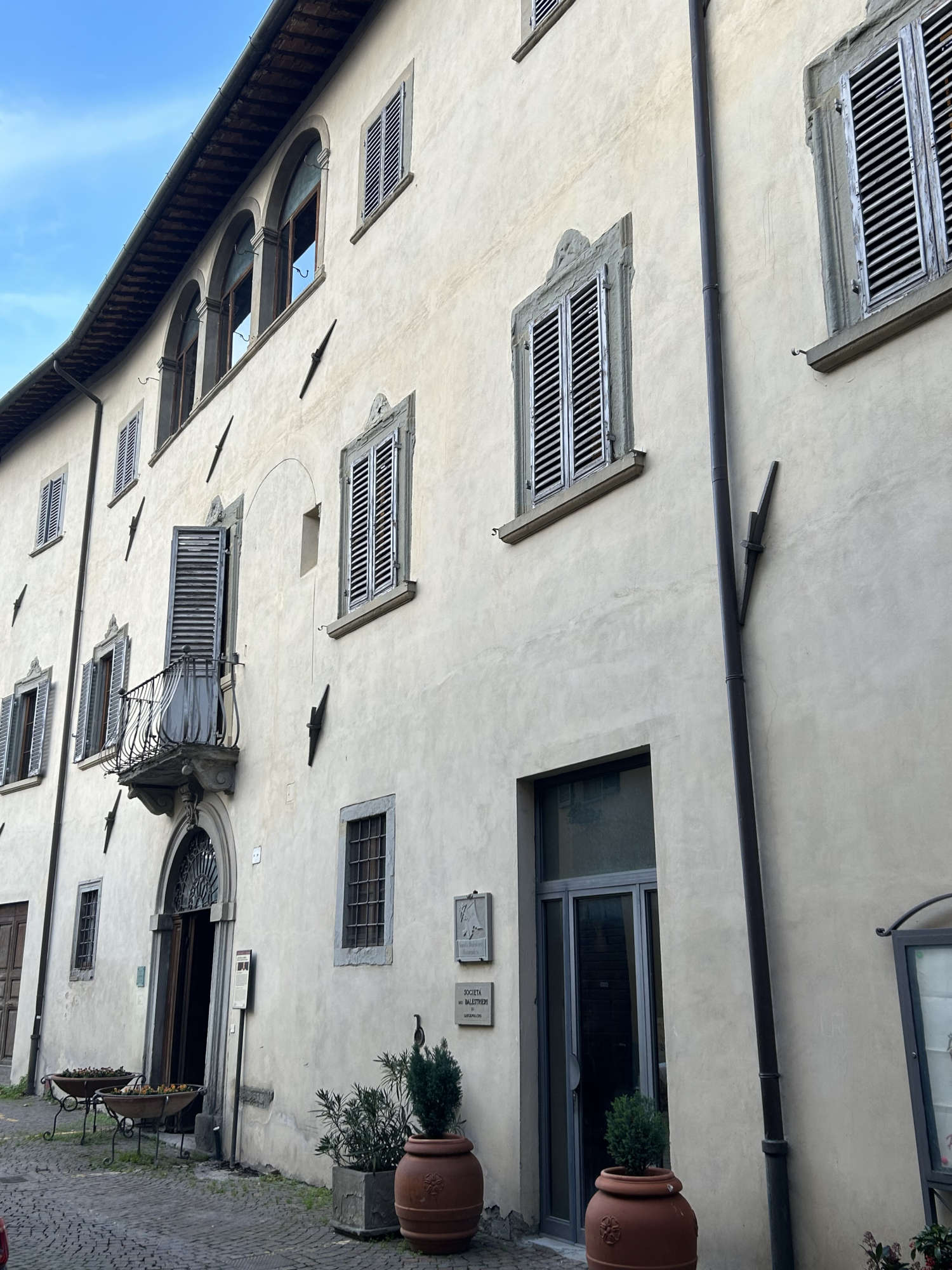
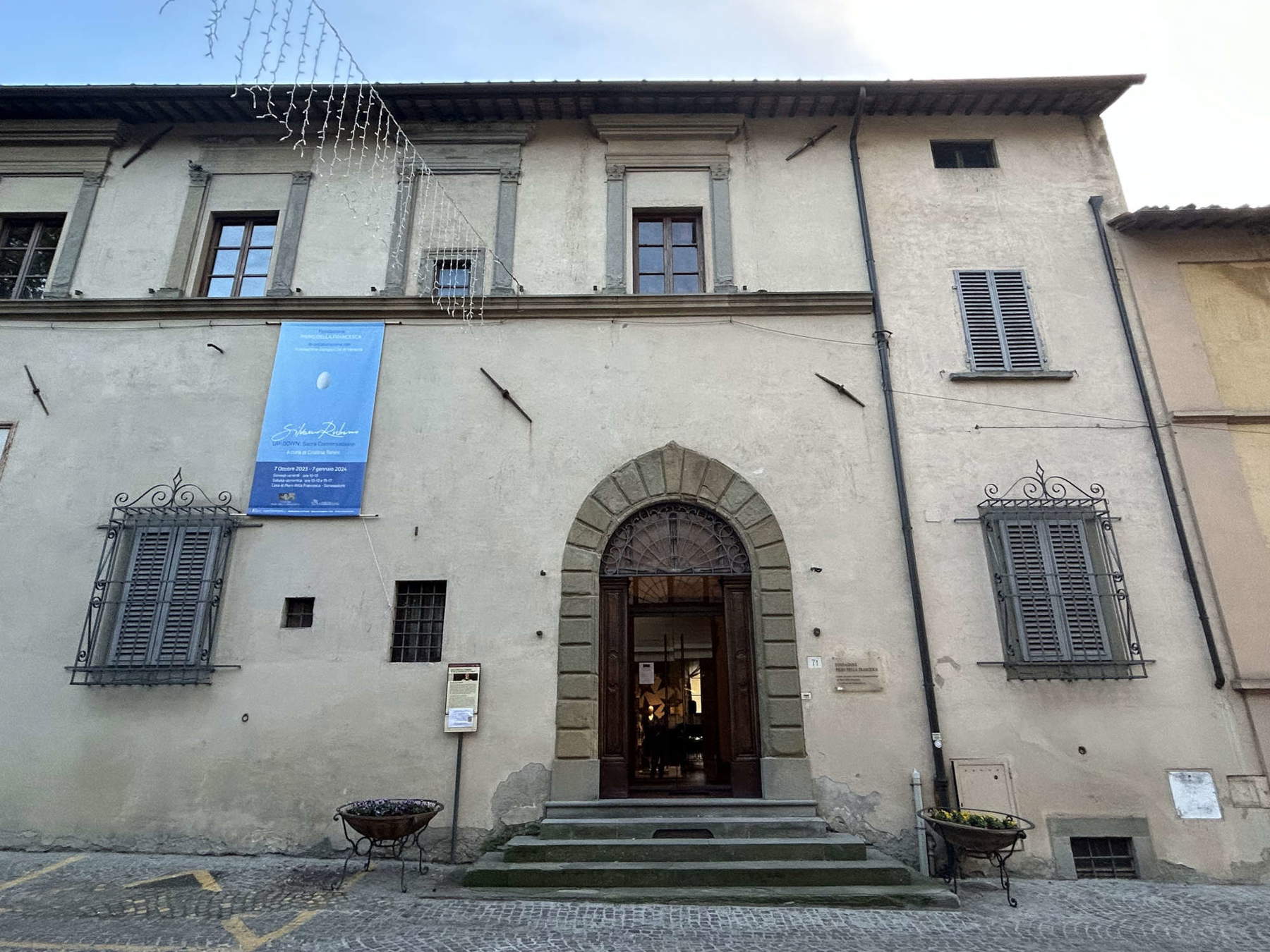
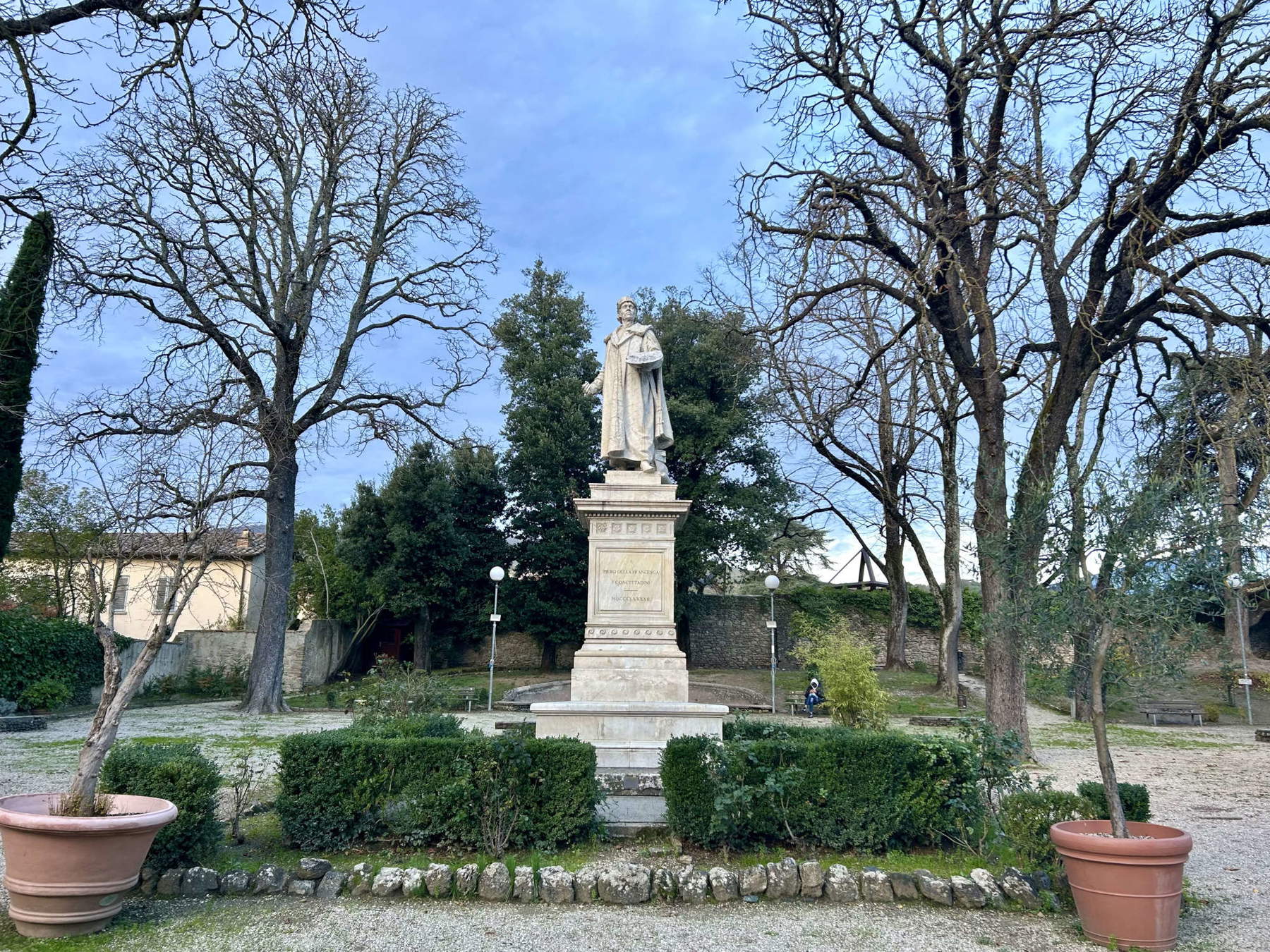
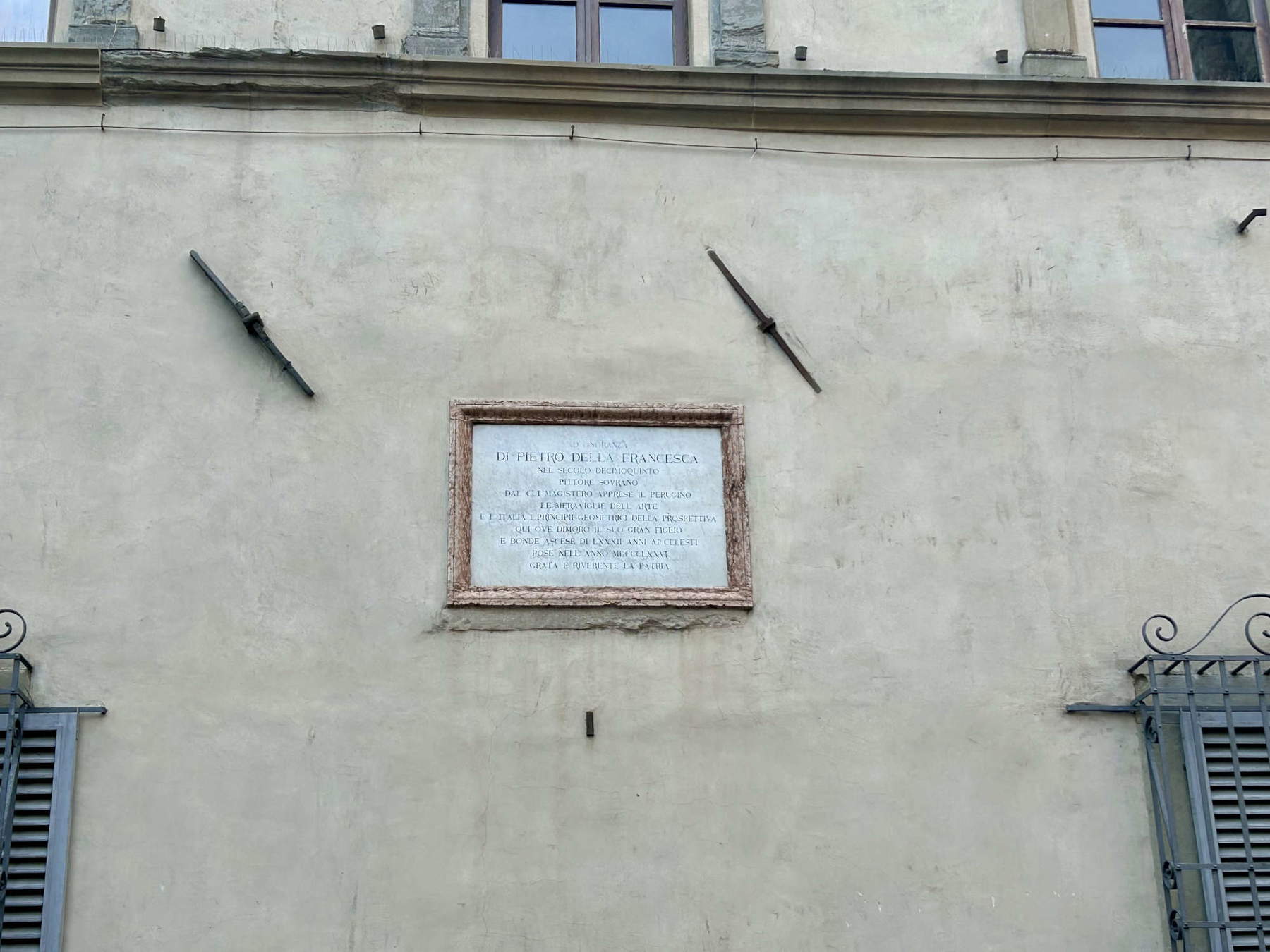
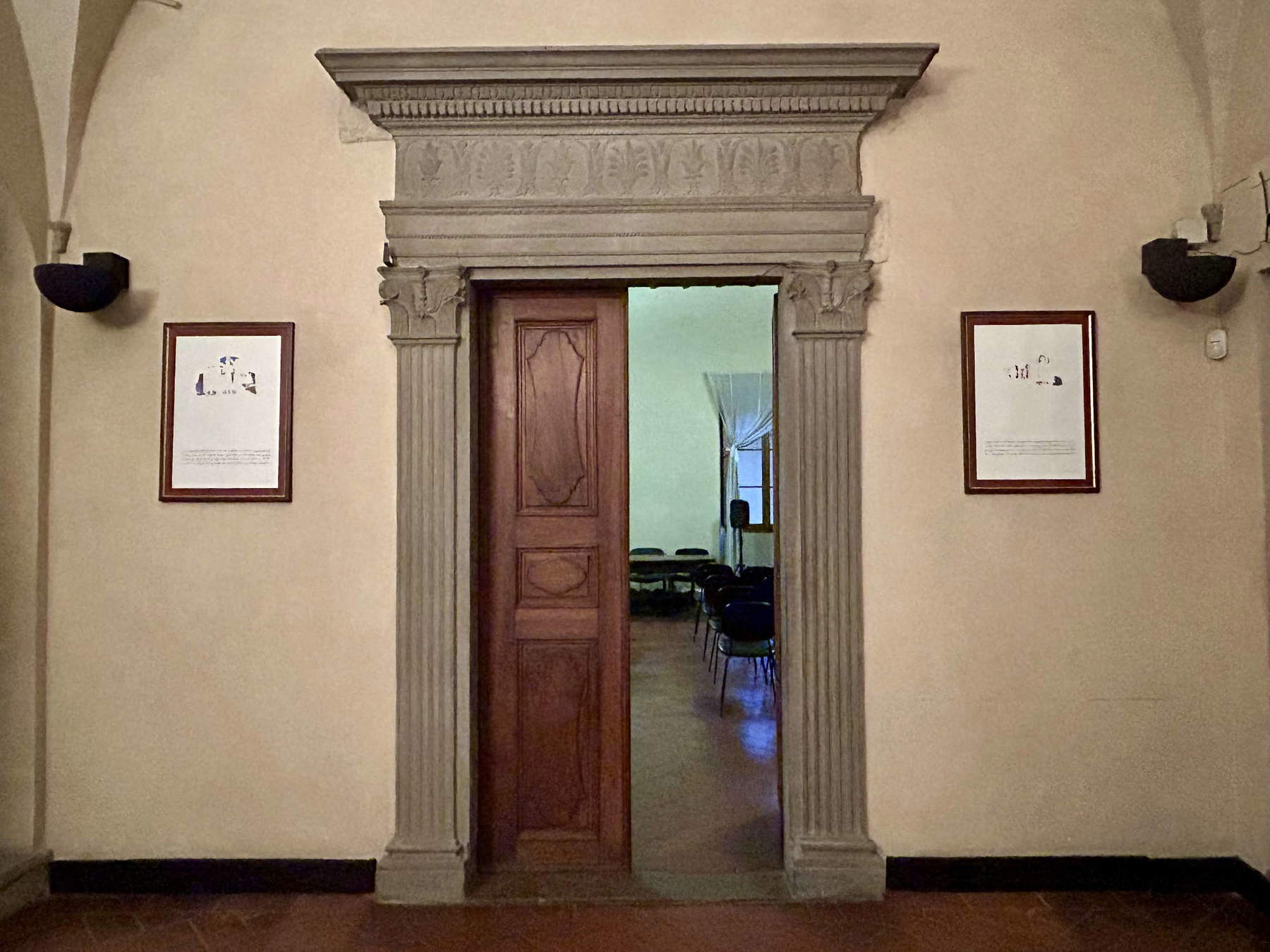
Following a long restoration and with the establishment of the Piero della Francesca Foundation, in 1990 the building finally took on a public purpose, both as a center for studies, a space for exhibitions, and endowing itself over time with a collection open to the public, with the aim of enhancing the memory of the great artist.
Today, although the building is partly modified from when it was inhabited by Piero with his family, an atmosphere is evoked that allows the visitor to relive the artist’s living spaces, all this without relying on easy as well as questionable furnishing solutions, but instead allowing the architecture to express itself to the fullest. In the cross-vaulted atrium, which welcomes the visitor, for example, one can still find the original stone elements probably wanted by the artist in the rearrangement, such as the doorway with architrave decorated with thistle flowers and palmettes, which also seems to have been repainted in the background of the Flagellation, now in Urbino, and here one can also find the family coat of arms in pietra serena, once placed outside. One then passes through a large hall, with a display that serves as an in-depth bibliography of Piero; in fact, several publications are arranged here, including texts by Luca Pacioli among the first to mention Piero della Francesca, and to call him “monarch of Painting in his day.” It then moves on to publications by English, German and French authors who had the merit even before the Italians of rediscovering Piero, and then again the works of Roberto Longhi, including the 1927 monograph that was fundamental for the resumption of studies in Italy. Also in the room is a polychrome terracotta sculpture attributed to Angelo Tricca, with a youthful Portrait of Piero from the deposits of the Civic Museum of Sansepolcro, as well as the two painted doors, which for a long time held the Madonna of Mercy, of the famous polyptych, which in the 17th century had been dismantled and reused in a Baroque-style altar.
This is followed by a room devoted to temporary exhibitions, sometimes including contemporary installations, and then by the reconstruction of a studium, a research space that Piero and Luca Pacioli had in Sansepolcro, where editions of the treatises and some polyhedrons, complex geometric shapes that interested both Biturgens scholars, are displayed, as well as an inlay on deposit from the Museo Civico, part of a 15th-century wooden choir that Salmi traced back to the Pierfrancesque school because of the great perspective interest these panels show.
Also on the ground floor is a room with grotesques, which displays in the showcases some dazzling ceramics with naturalistic motifs and headdresses, inspired by the frescoes of the Cycle of the True Cross and made in 1992 for the exhibition Con gli occhi di Piero. Continuing to the ground floor, one crosses some functional spaces for the Foundation’s meetings and used as a library. Then the visit develops to a lower floor, that of the ancient house: descending a monumental staircase, one arrives at a cloister with a well, embellished by vaulted ceilings with refined stone corbels, and other rooms. These spaces probably also housed the kitchens, now evoked by a fireplace not from the period, and then there are some multimedia installations, which provide insight into Piero’s works and studies.
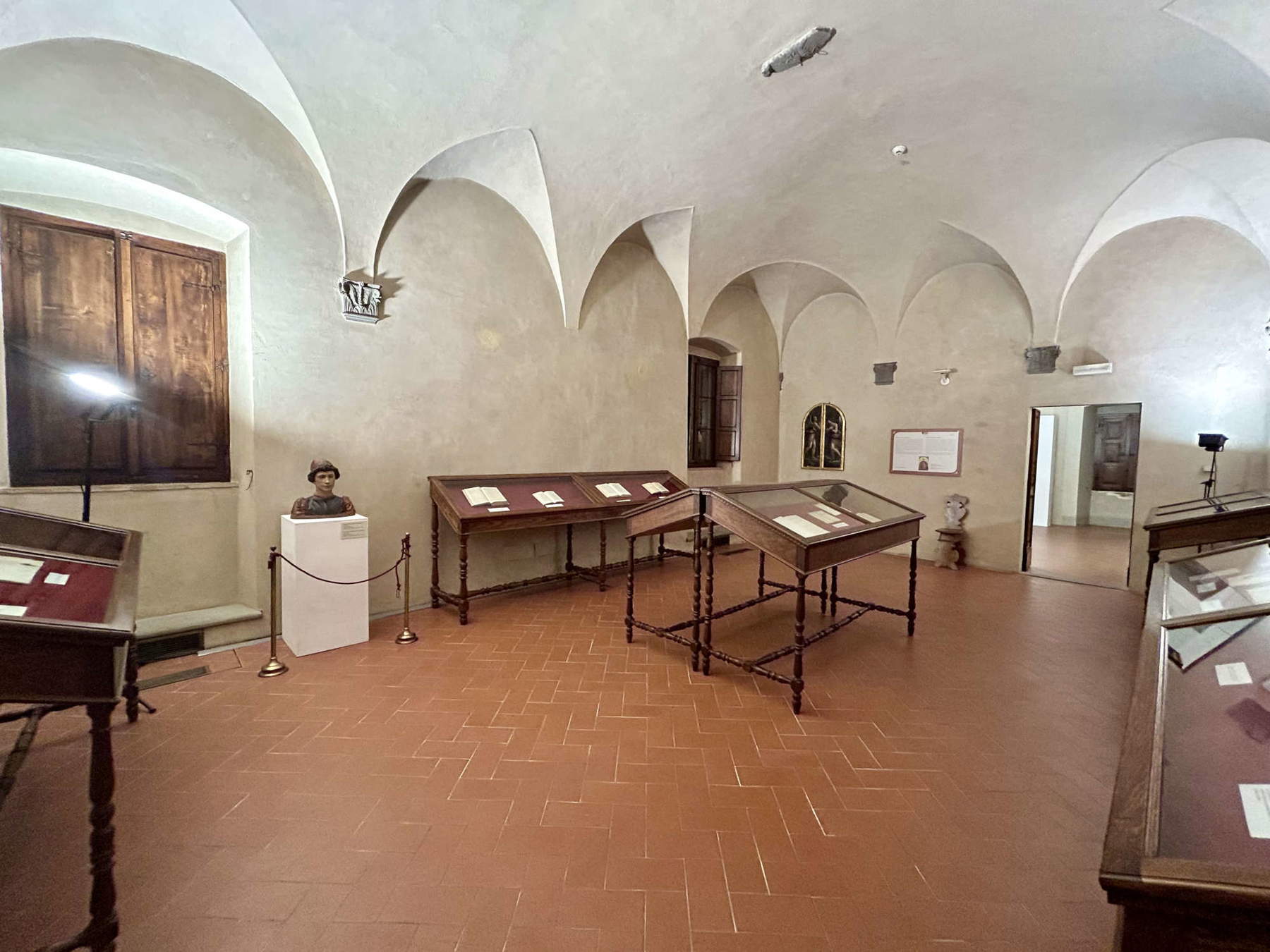
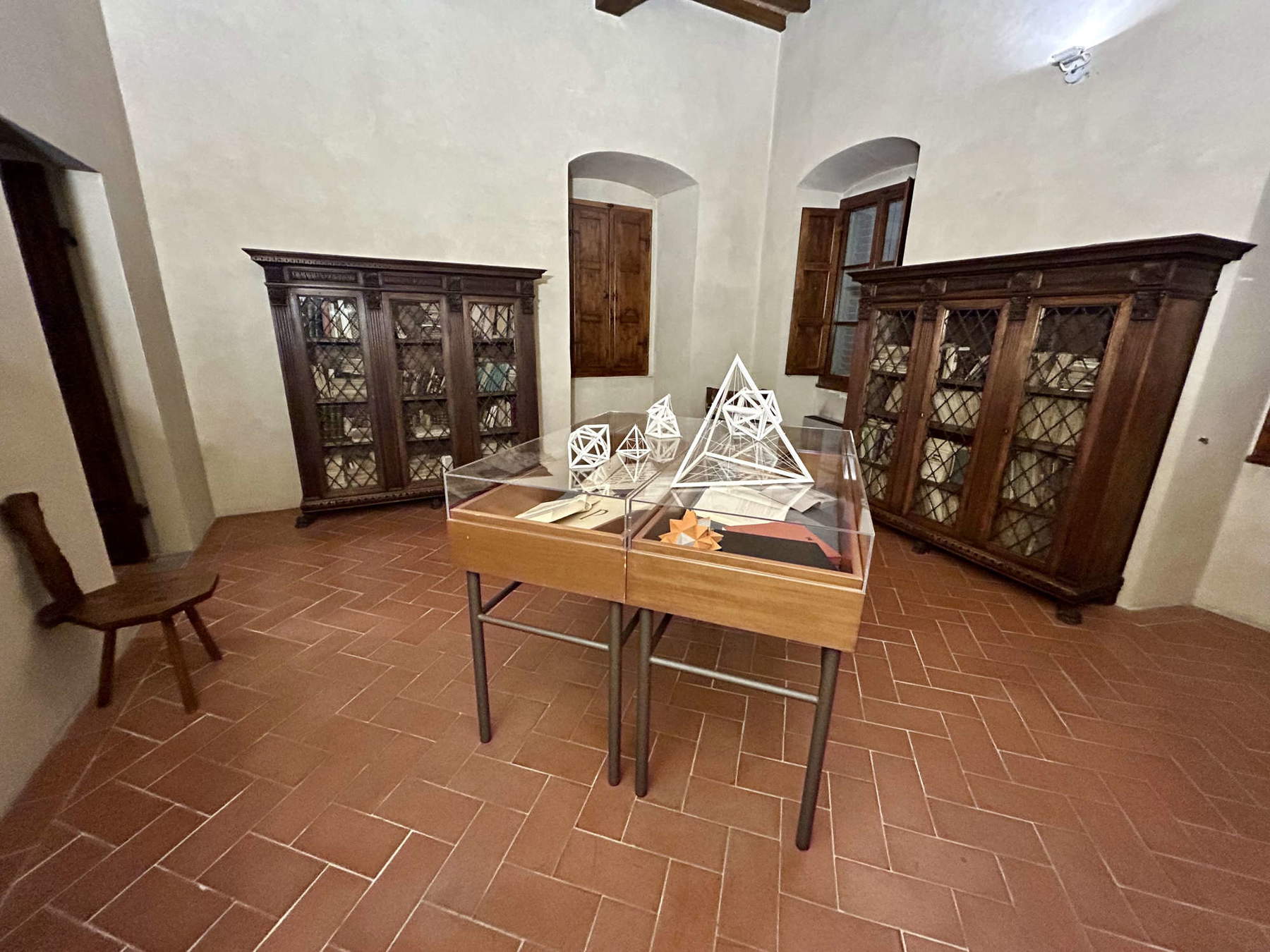
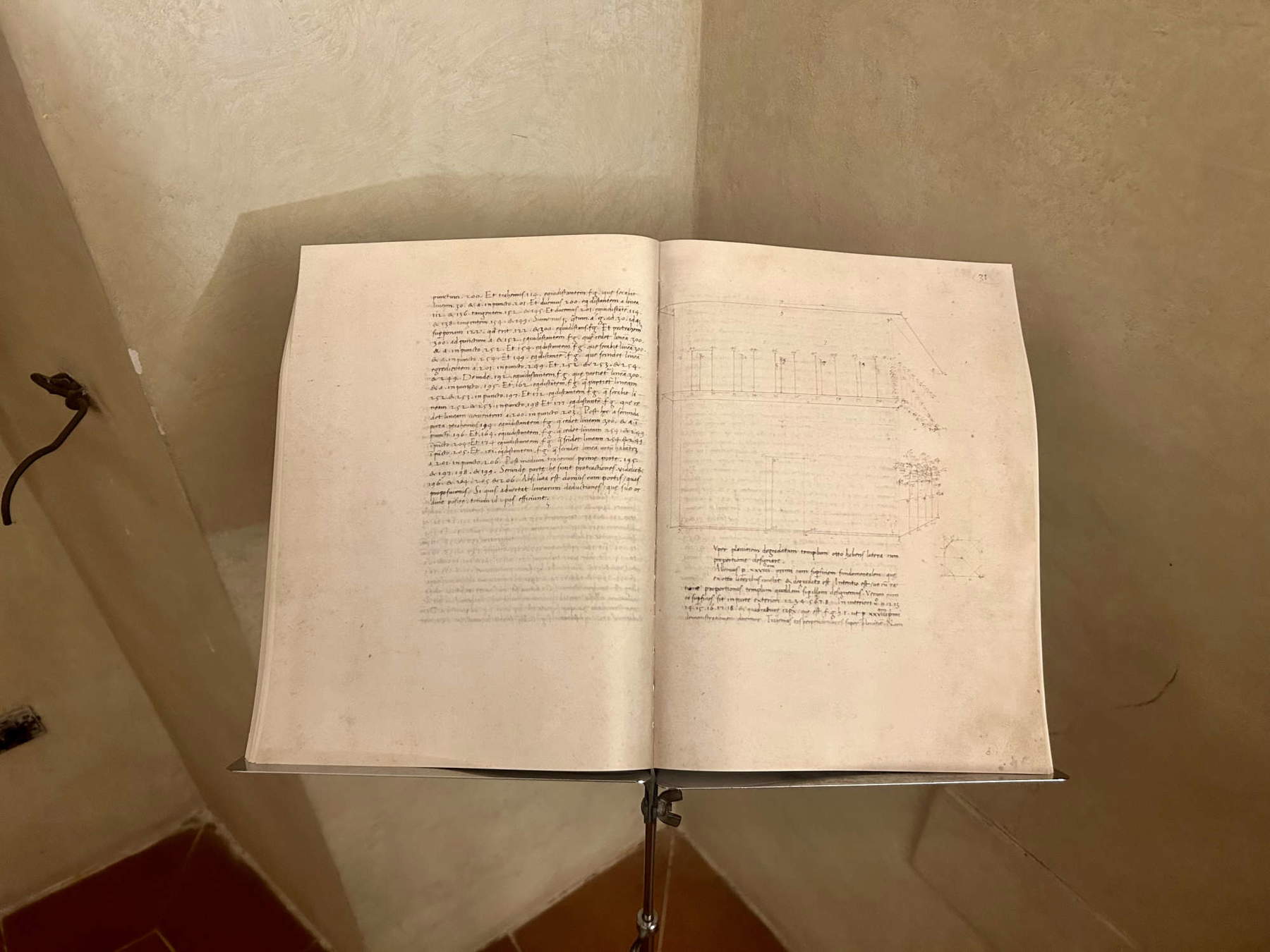
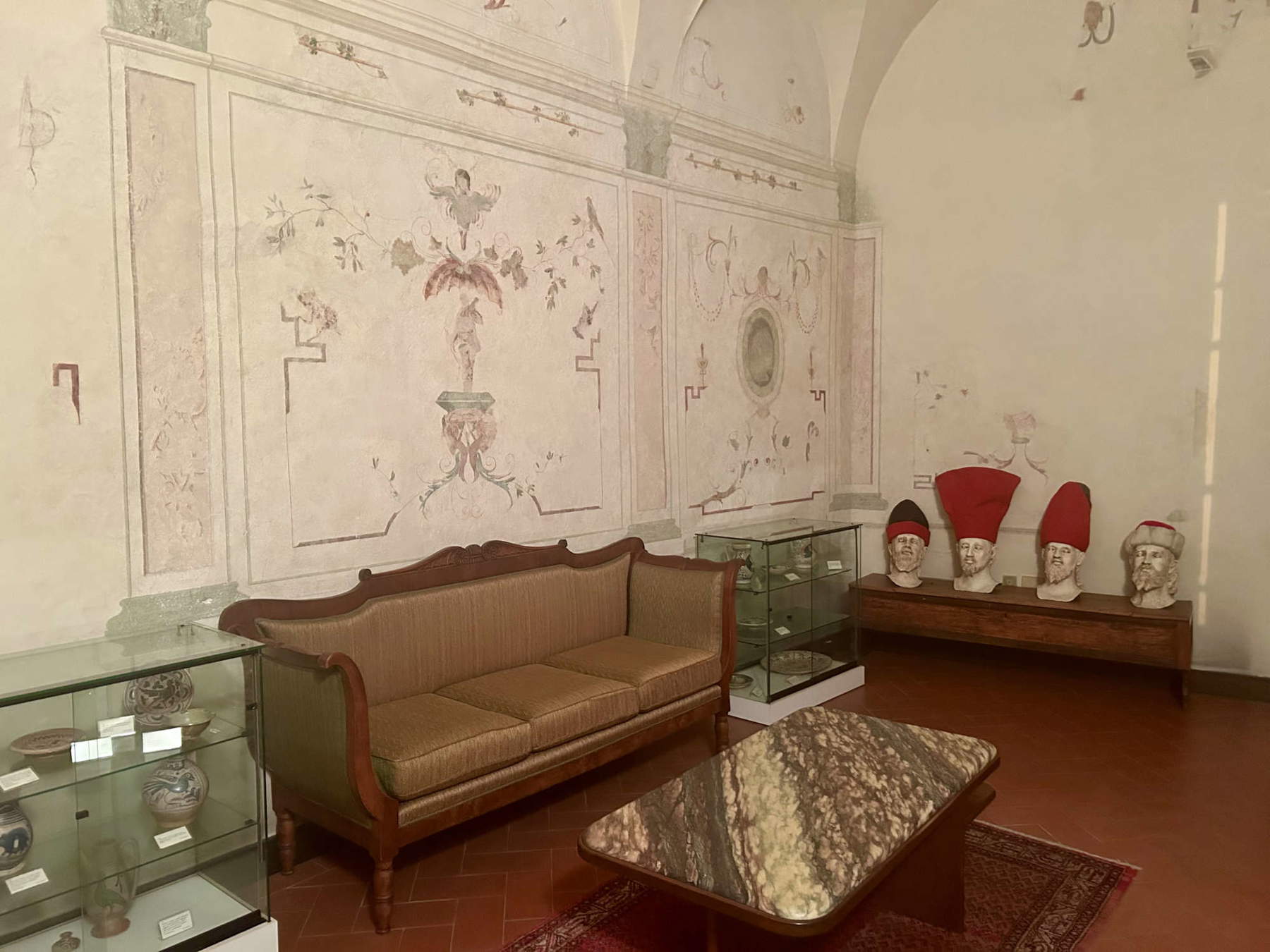
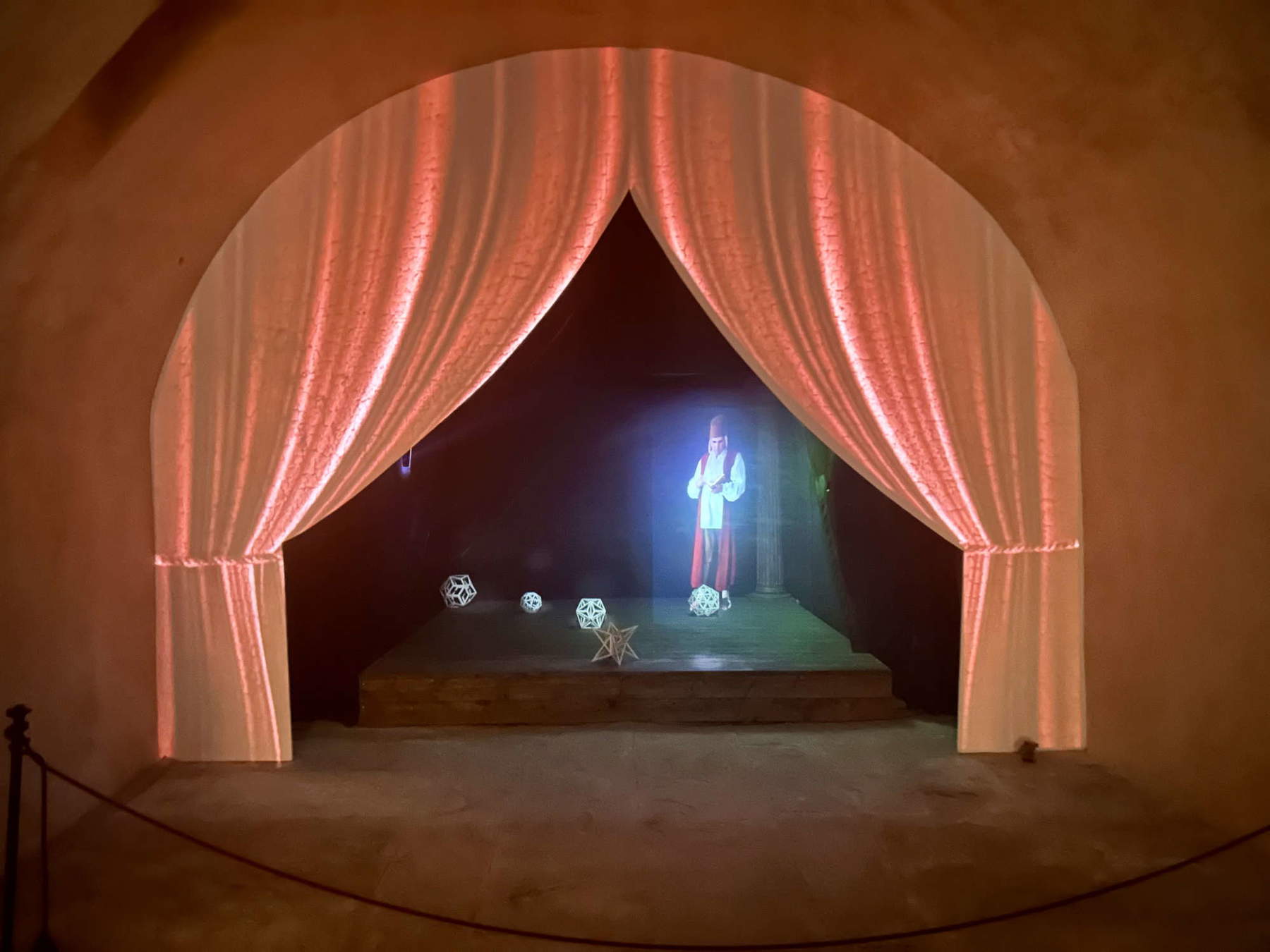
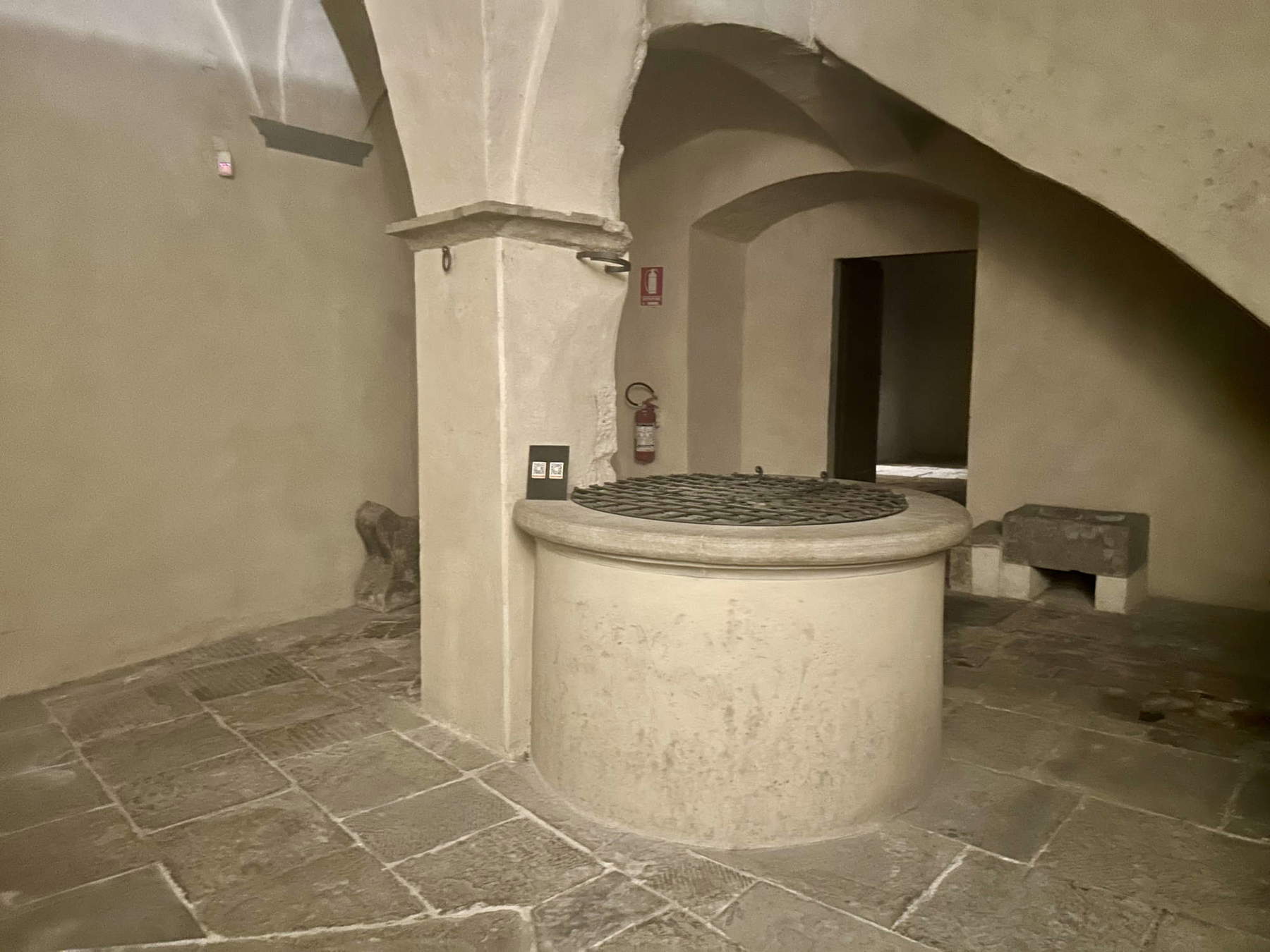
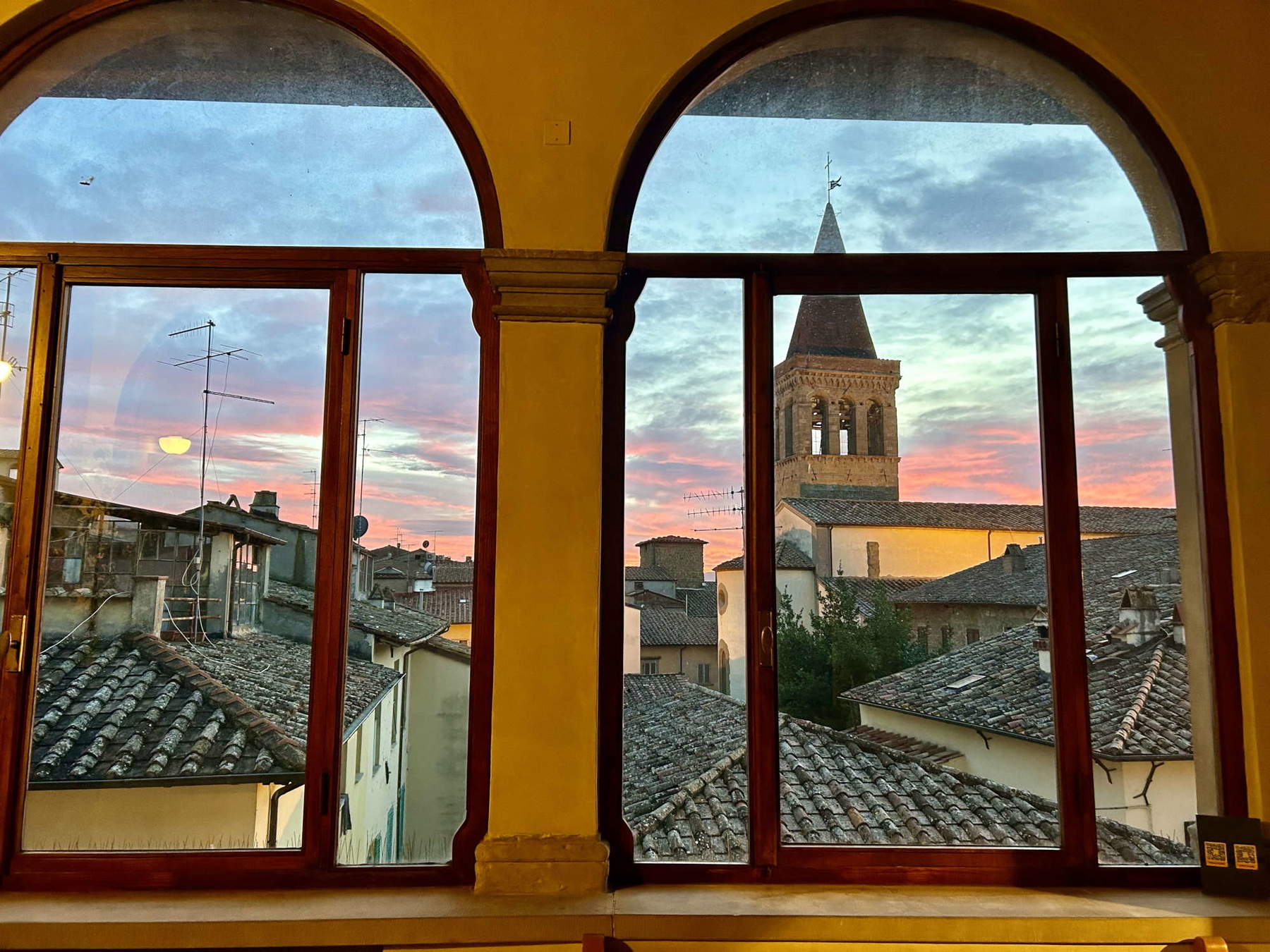
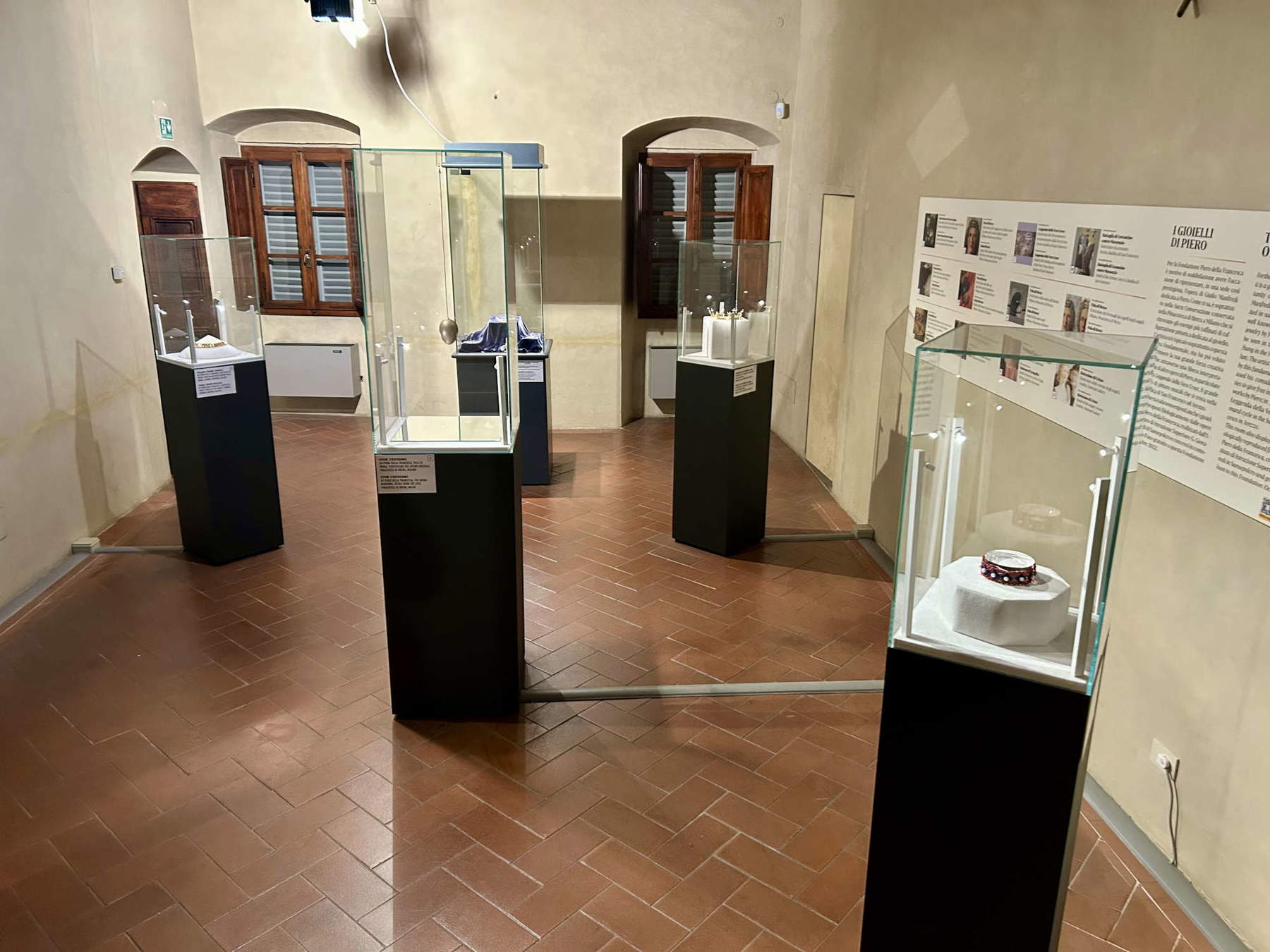
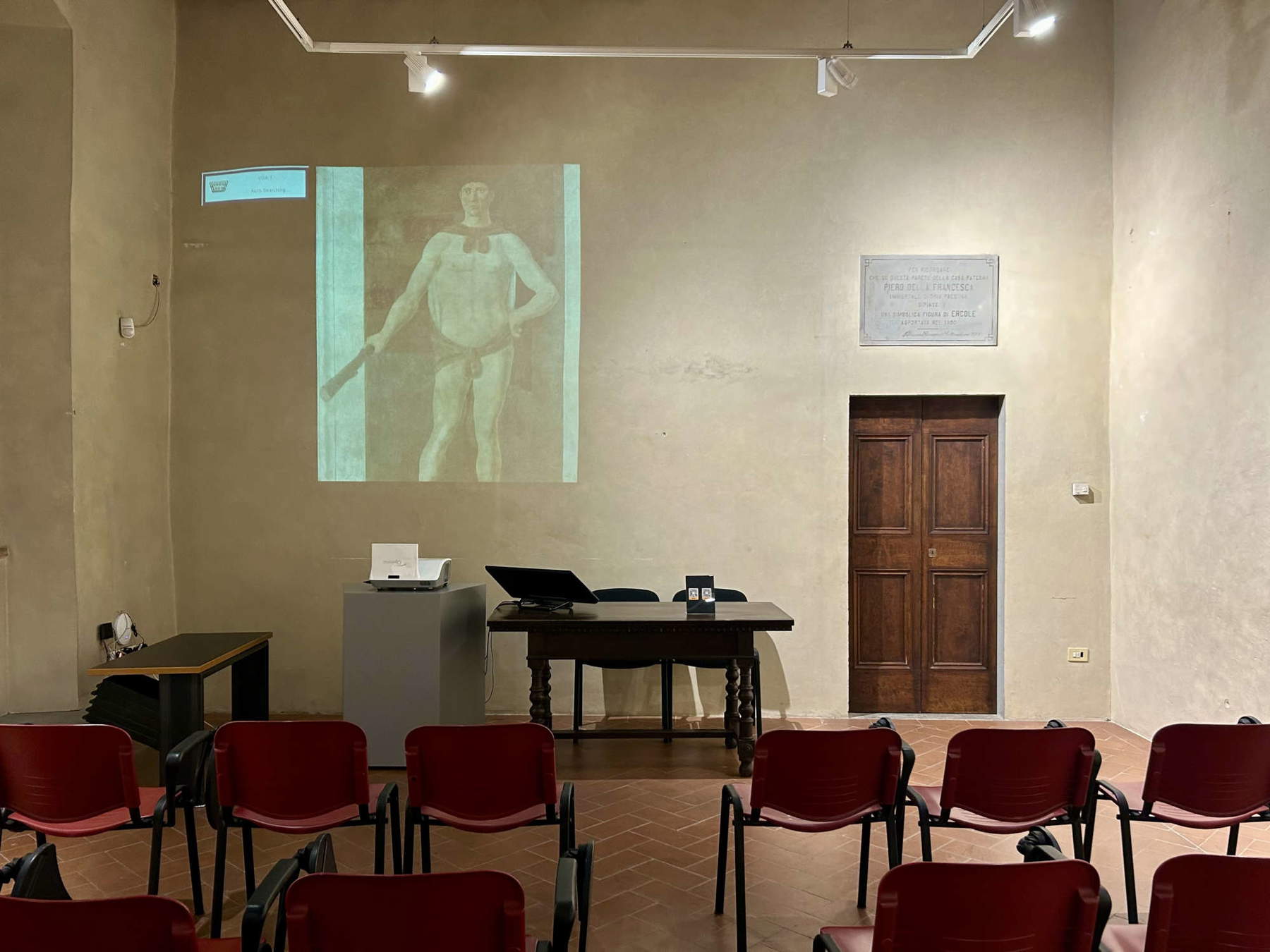
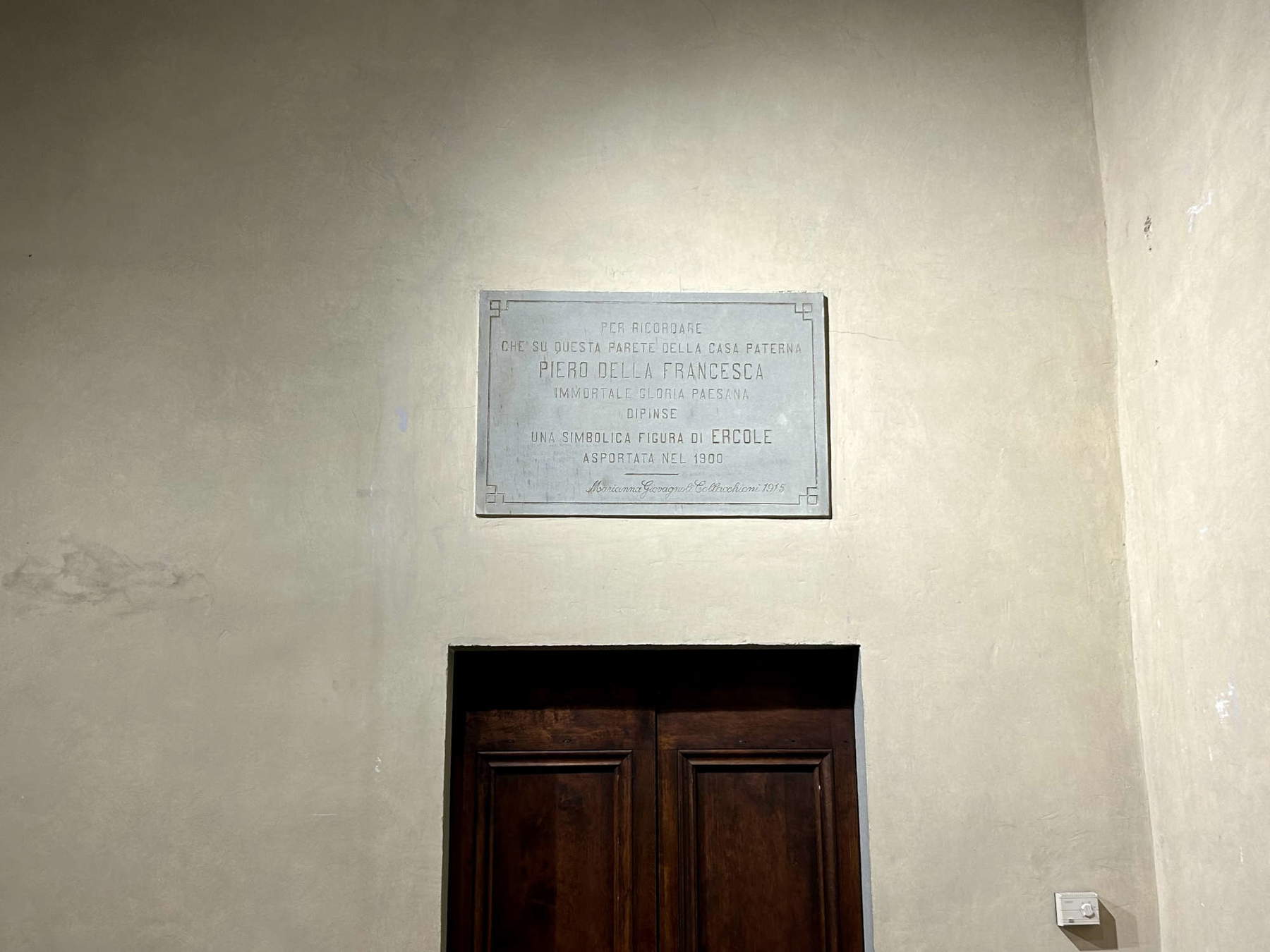
In contrast, on the upper floor, still part of what documents recall as the "new house," is a splendid loggia overlooking the historic center of Sansepolcro, which has remained virtually unchanged since Piero’s time in these spaces, including the bell tower of the abbey, which the artist probably also took up in some of his paintings. Also on display here is a selection of sumptuous jewelry by Giulio Manfredi of Piacenza, an artist, designer and master goldsmith celebrated throughout the world.
Some of them were made philologically, that is, taken from Piero’s works and in particular from the Brera Altarpiece, which shows a very varied sampler of necklaces, brooches, and precious crosses, or like the splendid crown placed on the head of the Queen of Sheba in the Arezzo frescoes; others, on the other hand, are modern inventions of the designer, suggested, however, by the paintings of the Biturgensian.
We are then ushered into the large room where conferences and conventions of important cultural stature are held, which are also followed online. The space is adjacent to the room that was once the artist’s bedroom . Between 1860 and 1870, the long-dulled fresco ofHercules, painted by Piero and his only known work of mythological subject matter, was found on the wall above the door. That “overly nervous giant,” as Longhi wrote of it, was sadly detached and sold by the owners of the time, the Collacchioni family, who thought to compensate for the loss with an epigraph, still present today. The fresco, unfortunately unprotected by the laws of the time, is now at theIsabella Stewart Gardner Museum in Boston, and depicts the demigod in an attitude of contemplative repose, a symbol of humanistic culture. Although not yet the iconography of the Hercules at the Crossroads, the fresco anticipates the theme of virtus that would later have wide appeal in the homes of artists and intellectuals, demonstrating how Piero della Francesca had achieved increased social prestige.
The house of Piero della Francesca therefore not only stands out as a splendid museum thanks to a striking period architecture, which still partly shows the aesthetic, architectural and perspective researches of Piero, who lived and worked here, but also finds fulfillment in the collections, which are varied and arranged tastefully and soberly, without overdoing arbitrary revivals. Moreover, the fact that it draws its main raison d’être not so much from tourist enjoyment but from the desire to promote research dedicated to the artist, thanks to the serious commitment of the Foundation assisted by a scientific committee with leading names in the history of national and international art, makes Piero della Francesca’s birthplace one of the most successful and meritorious musealized artist’s houses active on the Italian territory.
Warning: the translation into English of the original Italian article was created using automatic tools. We undertake to review all articles, but we do not guarantee the total absence of inaccuracies in the translation due to the program. You can find the original by clicking on the ITA button. If you find any mistake,please contact us.